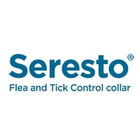
Cats are known for their sleek coats and graceful personalities, but when skin allergies strike, their comfort and well-being can quickly be affected. Cat skin allergies and allergic dermatitis are among the most common reasons pet parents visit veterinarians. These conditions can cause itching, redness, and discomfort, and if left untreated, they may lead to infections or long-term skin problems.
In this blog, we’ll explain what cat skin allergies are, the symptoms you should watch out for, common causes, and effective treatments to help your feline friend feel better.
What Are Cat Skin Allergies?
A skin allergy occurs when a cat’s immune system overreacts to a substance that it considers harmful, even though it may not be dangerous. This exaggerated immune response causes irritation, inflammation, and other skin issues. The term allergic dermatitis refers to inflammation of the skin caused by allergies.
Cats can develop allergies at any age, but symptoms often become noticeable between one and three years old.
Common Causes of Cat Skin Allergies
Several triggers can cause skin allergies in cats. Identifying the cause is the first step toward treatment. The most common culprits include:
1. Flea Allergic Dermatitis (FAD)
Even a single flea bite can cause a severe reaction in cats that are allergic to flea saliva. This often results in intense itching, hair loss, and skin lesions, especially around the tail, back, and thighs.
2. Food Allergies
Some cats are sensitive to specific proteins in their food, such as those found in chicken, beef, or fish. Grains and dairy products can also trigger food allergies, leading to skin irritation and sometimes digestive issues.
3. Environmental Allergies (Atopy)
Similar to people, cats may react to environmental triggers like dust mites, mold, pollen, or even household cleaning products. These allergens often cause seasonal flare-ups of dermatitis.
4. Contact Allergies
Certain shampoos, flea collars, bedding materials, or cleaning chemicals can irritate your cat’s skin on direct contact.
5. Secondary Infections
When cats scratch or bite irritated skin, bacteria or yeast may infect the area, exacerbating the condition and hindering its healing.
Symptoms of Cat Skin Allergies
Skin allergies can show up in different ways, but the most common signs include:
- Excessive licking, scratching, or biting at the skin
- Red, inflamed, or scabbed skin
- Hair loss, bald patches, or thinning fur
- Small bumps, sores, or open wounds
- Greasy or flaky skin
- Bad odor from infected areas
- Excessive grooming, often focused on one spot
If you notice any of these symptoms, it’s important to consult your veterinarian before the condition worsens.
How Veterinarians Diagnose Cat Allergies
Diagnosing allergies in cats can be challenging because the symptoms often overlap with those of other skin diseases. Your veterinarian may use a combination of methods, such as:
- Skin scrapings or cytology: To check for mites, yeast, or bacteria.
- Elimination diet trials: Feeding your cat a hypoallergenic or limited-ingredient diet to identify food allergies.
- Blood or intradermal testing: To identify environmental allergens.
- Flea control programs: To rule out flea allergy dermatitis.
Effective Treatments for Cat Skin Allergies
The right approach to treatment varies based on what’s triggering the allergy. Some of the most common solutions include:
1. Flea Prevention
For cats with flea allergies, strict flea control is essential. Using veterinarian-approved flea and tick treatments will protect your cat and prevent flare-ups.
2. Dietary Management
Transitioning your cat to a limited-ingredient or hypoallergenic diet can be an effective way to pinpoint and control food-related allergies. Once the trigger food is identified, avoiding it is key to long-term relief.
3. Medications
- Antihistamines or corticosteroids can reduce itching and inflammation.
- If a secondary infection develops, your veterinarian may recommend antibiotics or antifungal treatments to help clear it up.
- Immune-modulating drugs like cyclosporine can help in chronic cases.
4. Environmental Control
If environmental allergens are the cause, steps such as regular vacuuming, using air purifiers, and minimizing exposure to dust or pollen can help.
5. Medicated Shampoos and Topical Treatments
Oatmeal baths, soothing sprays, and medicated shampoos can reduce skin irritation and promote healing.
Home Care Tips for Cats with Allergies
Alongside veterinary treatment, you can take steps at home to keep your cat comfortable:
- Maintain consistent grooming to keep your cat’s coat clean and free from irritants.
- Offer a nutritious diet that includes omega-3 fatty acids to promote strong skin health and reduce inflammation.
- Wash your cat’s bedding and toys regularly to keep them clean and fresh.
- Keep your home clean and dust-free.
- Avoid using harsh chemicals or scented cleaning products around your cat.
When to See a Veterinarian
If your cat shows persistent itching, hair loss, or visible skin irritation, don’t delay seeking veterinary care. Skin allergies rarely resolve on their own and can lead to infections if untreated. A veterinarian will provide a proper diagnosis and a tailored treatment plan.
Conclusion
Cat skin allergies and allergic dermatitis can be uncomfortable for your pet, but they are manageable with the proper care. By recognizing symptoms early, identifying the cause, and following effective treatment plans, you can help your cat live a comfortable and happy life.
As a pet parent, staying proactive with flea prevention, diet management, and regular check-ups can make a huge difference. If you’re unsure about your cat’s symptoms, always consult your veterinarian for the best advice.






